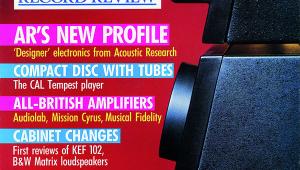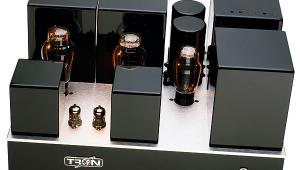Rogers Returns
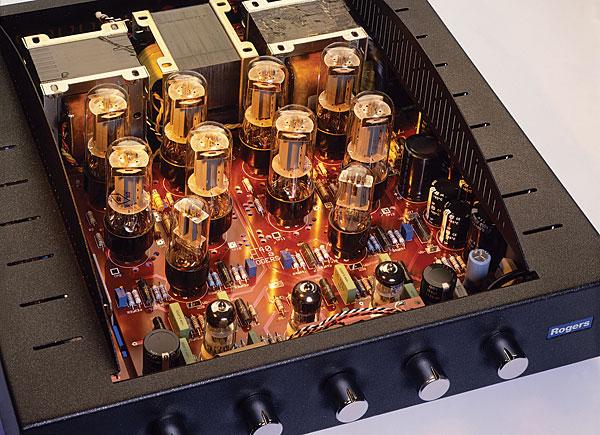
When the grapevine alerted the world's tube crazies to the return of Rogers amplification, visions of two-tone faceplates danced before our eyes. A nice Cadet III [HFN May '13], or maybe an HG88 visually unchanged but suitably modernised. The collector in me rejoiced. But the Rogers beancounters felt that an all-new product was a more sensible proposition, which is why the E-20a and E-40a all-valve integrated amps have nothing whatsoever to do with the preceding models. Indeed, they have little to do with Rogers.
Stone Me
Both are designed and built by Audio Note and they say as much on the valve cover and the back. Rogers commissioned Peter Qvortrup and his crew to fashion and construct two all-new integrated amplifiers, 'voiced' to complement Rogers loudspeakers, of course. And stone me if they didn't force Peter to make the new amplifiers work with the LS3/5a. I, for one, am ecstatic that there now exists a pair of amps which are dedicated to my favourite speaker of all time.
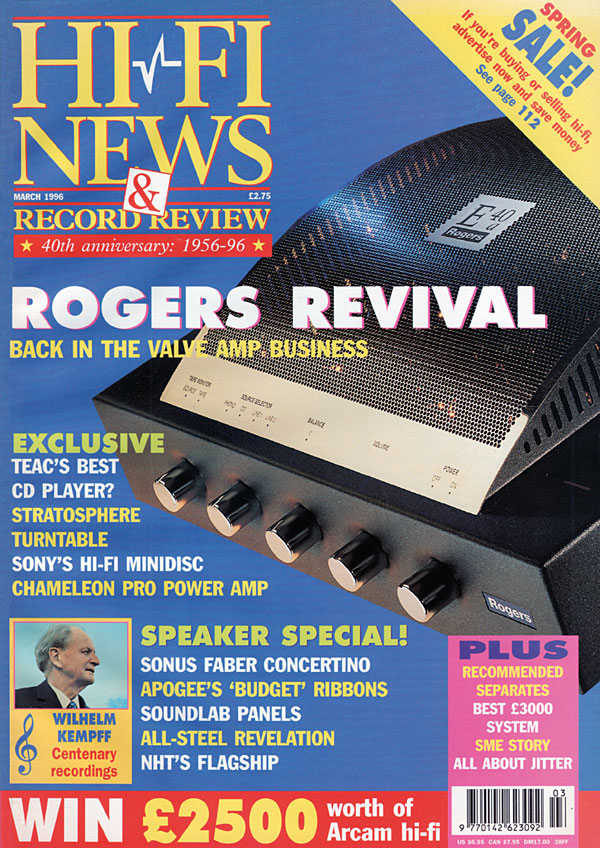
What's so blissfully, mirthmakingly ironic is that Peter has bored me many times with tales of what's wrong with LS3/5as (lack of bass, low sensitivity, low power handling), all the while trying to convince me that my privates will fall off if I continue to use speakers of less than 94dB sensitivity instead of politically-correct horns, aged Snells or his own similar concoctions.
Externally identical, the E-20a and E-40a each occupy a square of 430x430mm, while the height at the peak of that curved cover is 175mm. Though nicely made,
I am at a loss to recall any piece of hi-fi so grotesque. The curved valve cover, necessary to protect us from the rules according to EC directives, is a sheet of metal held in place at one end by slots and screwed down at the other. I would anticipate a proliferation of small dents, no matter how careful the owners might be. The review samples were already showing signs of stress.
Power In Numbers
Across the front are rotaries choosing between source and tape, source select, balance, volume and power on/off. This uncluttered layout makes the unit easy to use, with only one ergonomic faux pas: because the volume control is exactly the same size as the others, and because the on/off is to the extreme right, it's all too easy to switch off the amplifier when all you wanted to do was lower the volume. I would advise Rogers to fit a larger volume control knob.
Clever thinking applies to the rear, the designers having etched the socketry legends onto the amp's cover. Because of this convenient map, you can lean over the unit without having to see the back. The socketry itself consists of enough speaker binding posts to provide separate terminals for 4-6ohm speakers or 8-16ohm designs, while gold-plated RCA sockets accept tape in/out, CD, a couple of line sources and phono. The latter feeds the signal to a 47kohm input with 2.5mV sensitivity, with passive RIAA equalisation, fine for moving-magnets and just about adequate for high-output moving-coil pick-ups.
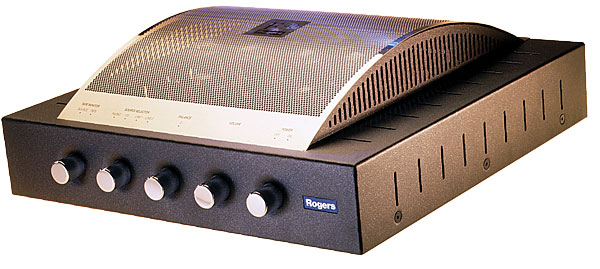
Whatever Audio Note's militant allegiance to vinyl replay, the phono stage is below average, thin-sounding and of limited dynamic capability. But since there are plenty of line inputs, this can be replaced by a good phono stage, like EAR's 834P or the CLEAR phono amp. On paper, the only specified difference between the E-20a and the E-40a is power rating, which is 20W/ch for the former and 40W/ch for the latter – as the model numbers advise.
Both are Class A designs with identical phono stages; the line inputs have 150mV sensitivity and 100kohm impedances; they look the same, weigh the same (20kg), and share much inside. It is when you come to the power supplies that the first difference emerges, that of the E-40a being much better specified. The second difference concerns the valves used.
Taking the tube complements first, the E-20a wears a pair of 6L6G beam pentodes in each channel, with two low-noise 12AX7WAs configured as anode followers providing the input stage, the second connecting directly to the high sensitivity input of the power amp section. The output section is a push-pull design (it must have gutted Audio Note not to do a single-ended circuit...) with automatic valve biasing with the literature bold enough to suggest a 10,000 hour valve life. Meanwhile, the power supply is deliciously overspecified, with separate, beautifully-made output transformers and








